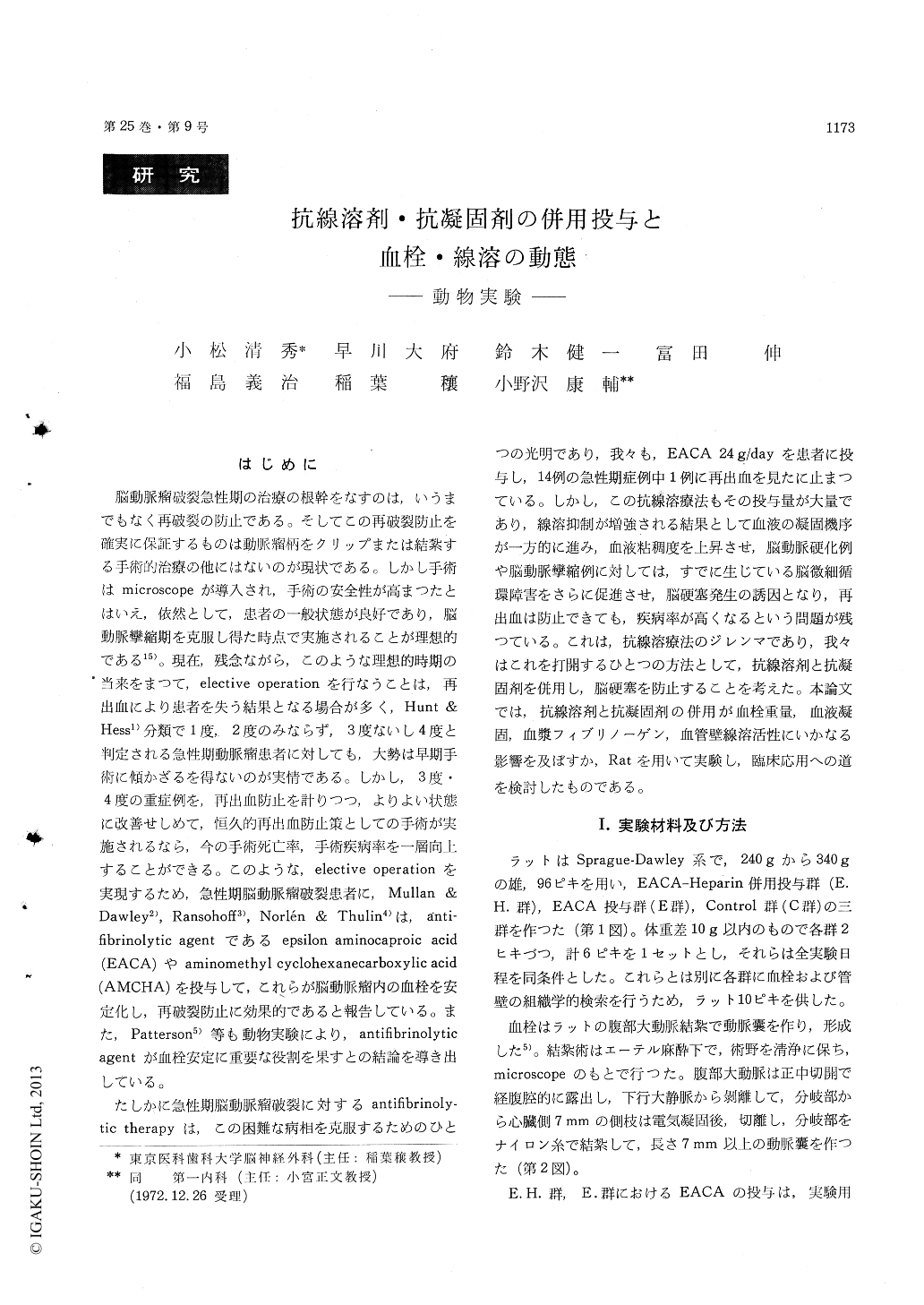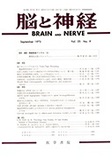Japanese
English
- 有料閲覧
- Abstract 文献概要
- 1ページ目 Look Inside
1)急性期脳動脈瘤破裂に対する抗線溶剤投与は脳硬塞を進行させる可能性があり,これを防止するためHe—parinの併用療法を検討し,その基礎的研究として併用投与が血栓血液血管壁にいかなる影響を与えるか。Ratを用いて実験した。
2)EACAは血漿および血栓の線溶活性を抑制し,血栓の形成・保全に資する。
3)Heparinの今回投与量では,血腫形成・出血などの副作用は全経過を通じ認めなかつた。
4)HeparinとEACAを併用しても,本実験では,その抗凝固作用はそこなわれず,またEACAの抗線溶作用にも著明な支障を来たさず,特に4日目 E.H.群血栓重量の高値は注目に値する。
Epsilon-aminocaproic acid (EACA) has been used clinically to the patients with ruptured aneurysm to prevent rebleeding before operation, but is thought to increase the incidence of ischemic cere-bral infarction as a side effect. In order to dis-solve this dilemma, the authers undertook the experimental study showing how the combined administration of EACA and heparin modified the experimentally induced arterial thrombus and the antifibrinolytic activity in the rat.
Ninty-eight rats were devided into three groups ; EACA-Heparin, EACA and control group. EACAwas administered orally 0. 8 g/kg/day from one day before ligation of the abdominal aorta, and heparin was injected subcutaneously 800 u/kg at first and then 400 u/kg every 12 hours. Autopsy was done at 4 th, 9 th and 14 th day after ligation.
(RESULTS) 1. EACA plays an significant role in preserving thrombus weight. 2. The side effect of heparin was not recognized in this study. 3. In EACA-Heparin group, antifibrinolytic as well as anti-coagulant effect of the agents seemed to be well preserved.
The combined administration of antifibrinolytic agents and heparin prevents possibly the rebleed-ing without ischemic cerebral infarction in the treatment of ruptured aneurysm.

Copyright © 1973, Igaku-Shoin Ltd. All rights reserved.


